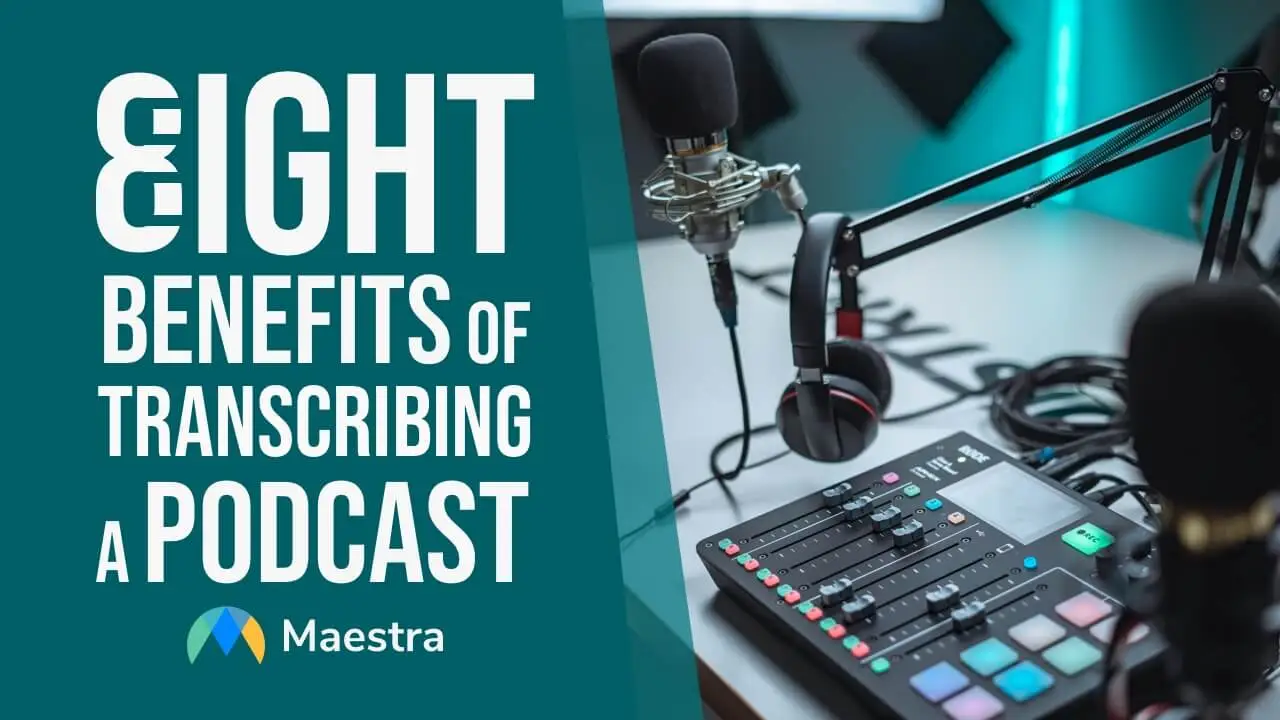8 Benefits of Transcribing a Podcast

1. Podcast Highlights Can Attract Listeners
Audio content is difficult to skim. Although an episode description could help draw listeners, a transcription increases the amount of content that can be readily and quickly scanned. If someone picks up on a few keywords, they might press play and enjoy your show.2. Text Can Maximize Your SEO Potential
Search engines like Google do not index audio files. This means that your content will probably not show up in search results. Although this might change in the future, you have to roll with the punches. You can publish your podcast transcription as a blog post to boost your content’s SEO so more people can discover you via search engines.3. Transcriptions Add Value to Your Content
Podcast transcriptions can supplement your show notes to add value to the user experience. Some listeners might have missed some interesting information. Some might want to dive into a particular topic and use your podcast as a jumping-off point. They can do more if they have easy and quick access to our content.4. Repurpose Transcriptions
Reusing content might seem like a weak strategy but it can be the opposite. When you repurpose your content, you can increase your popularity and target several channels with minimal effort. Can you imagine transcribing one of your podcast episodes and creating infographics, blog articles, or social media posts from the text? How many times could you repurpose your content? How many more people could you reach? Transcribing podcasts is great for social media marketing. You use the transcription to quickly write a blog post or to create great snippets for social media platforms.5. Transcriptions Can Be Easier to Share
Social media is one of the most effective marketing tools today. You should take advantage of every platform you can to spread your content. A positive aspect of social media is that posts are usually easy to share, meaning people who like your posts can share them with their friends with a touch of the screen.6. Transcriptions Can Please Readers
Some people prefer reading and nothing will change their ways. Instead of alienating this population segment, give them something interesting to read.7. Transcriptions Can Help You Expand Into International Markets
Your podcast does not have to live in a bubble defined by borders. For example, if your English-language podcast is about American life, then transcribing it and translating it for non-English speakers could increase the number of people who experience your content.8. Increase Audience Accessibility With Transcriptions
Not only can you reach non-native speakers but you can include people with impairments. There are several hearing impairments that people in your target audience may deal with, including age-related hearing loss, ear canal problems, conductive hearing loss, and more. Transcribing podcasts helps make your information more accessible. For instance, a listener who experiences hearing loss might be interested in the subject of your podcast episodes. Transcribing your podcast lets them read the information they want.Reach a Wider Audience With Maestra
Maestra’s Automatic Podcast Transcript Generator allows users to transcribe any audio or video file within minutes. The simple 3-step process can transform your video and audio content into editable text that you can insert into blog articles, social media posts, and more:- Upload Your File: Upload your file to Maestra’s cloud.
- Transcription Automatically Begins: All you have to do is wait until your transcript is ready (typically 20% of the duration of the file).
- Edit and Export: You can use our advanced editor to easily modify many parts of the transcript. Once you are satisfied, you can export the file as a PDF, a Word document, or a TXT file.
